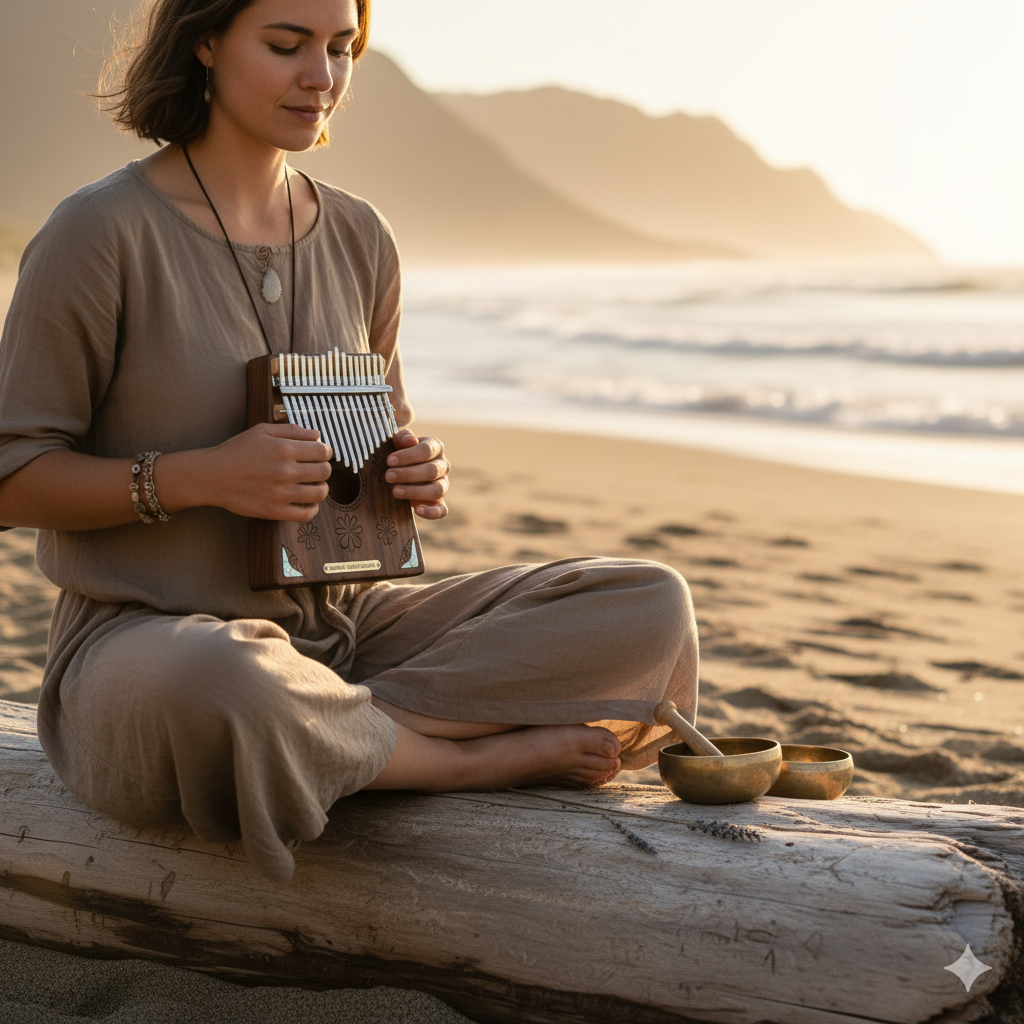When the Kalimba Meets Nature: A Healing Feast for the Eyes and Ears

Imagine yourself walking down a sun-dappled forest path or sitting on a sandy beach listening to the rhythmic waves. In your hands, you hold a small, elegant kalimba. As you pluck the tines, its clear, ethereal notes flow out like water droplets, blending with the natural sounds around you—the rustling of leaves, the gentle lapping of waves, or the crisp chirping of a distant bird.
This is the unique magic of playing the kalimba outdoors.
Why the Kalimba is the Perfect Partner for Outdoor Music
The kalimba, or thumb piano, is a musical instrument born for nature. Its suitability comes from several key advantages:
-
Light and Portable, Ready for Adventure: The kalimba's compact size and light weight mean it fits easily into a backpack. Unlike a guitar that needs a special case or a cello that's cumbersome to carry, the kalimba truly embodies the idea of "music on the go."
-
Ethereal Tones that Resonate with Nature: The kalimba's pure and healing sound is non-intrusive and blends seamlessly into any natural setting. Its notes harmonize perfectly with the sounds of wind, water, insects, and birds, creating a unified and peaceful atmosphere. This allows both the player and the listener to fully immerse themselves in the moment and feel a deep connection with nature.
-
Easy to Learn, Enjoy Anytime, Anywhere: The kalimba has a very low barrier to entry. Even without any musical background, a beginner can learn simple tunes in a short time. This gives you more freedom outdoors; you don't need to find a quiet corner or worry about complex fingering. You can simply pluck the tines spontaneously, enjoying the pure joy of making music.
How to Begin Your Kalimba Outdoor Journey
If you'd like to capture your own musical nature trip with a kalimba, here's how you can do it:
-
Choose Your "Stage": From a familiar park bench to a secluded lakeside or a magnificent mountain peak, choose a place that makes you feel relaxed and resonates with your music.
-
Document Your Moments: Bring your phone or camera to capture the moments where music and scenery intertwine. You can use time-lapse to record the notes under your fingertips as the sun sets, or use close-up shots to show your hands playing against a blurred background of the forest.
-
Share Your Story: Share your music and videos on social media. Write about your feelings—for example, "Playing the kalimba on the mountaintop feels like every note is a conversation with the wind," or "The kalimba by the sea is the perfect cure for everything." These heartfelt shares are what truly connect with people.